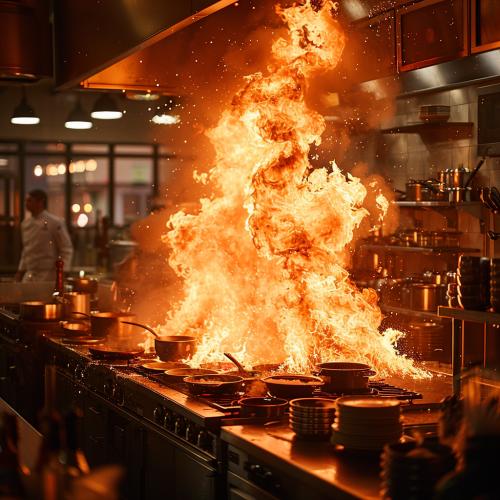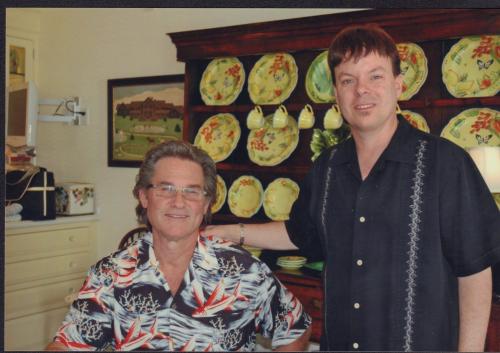Commercial Kitchen Fire Suppression: Ensuring Safety and Compliance

Commercial kitchens are high risk areas; they are places of intense heat, flaming and spiking temperature. In close quarters: Kitchens have many fire hazards at hand; a horrible mishap can occur anytime, threatening the safety of the staff working on site, the diners and the property. This makes commercial kitchen fire suppression systems mandatory; and in turn, an integral part of kitchen management. This article will touch on why have fire suppression systems in kitchens, how they work, what are the parts involved, how and where to get them installed, their maintenance practices and how far they are compliant to safety guidelines.
The Importance of Fire Suppression Systems
The kitchen environment presents many hazards that may create fire hazards; for example, cooking appliances used for production, grease, fats and open flames. Cooking equipment is the number one cause of structure fires in eating and drinking establishments, according to the US National Fire Protection Association (NFPA). Given such hazards, fire may spread extremely fast and can cause substantial damage to property, tragically kill people and entail major financial losses. Fire suppression systems are designed to detect fire early and respond quickly to extinguish it, minimizing potential damages and safeguarding people from harm.
Components of a Fire Suppression System
The commercial kitchen fire suppression system consists of a masterfully orchestrated set of components intended to detect and extinguish fires. The major components are grouped into detection devices (heat detectors, flame detectors, and smoke detectors), which detect heat, smoke, or flames, trigger the suppression system; the control panel that receives signals from the detection devices and activates the suppression system, which activates alarms to alert the building occupants and fire department; and the suppression agents (wet chemical agent in commercial kitchens) which is a substance intended to extinguish fires by forming a soapy foam to cool the flames and prevent re-ignition.
Overspray nozzles, usually placed over cooking equipment, release the suppression agent if activated to provide full coverage. Manual pull stations permit the kitchen staff to manually activate the suppression system if they detect a fire prior to the sensors. Interlocks allow for immediate electrical and gas shutoffs to cooking equipment if the suppression system is activated, cutting off the fuel source and generally ensuring a more secure environment against explosions.
Installation and Design Considerations
Installation of a commercial kitchen fire suppression system needs careful planning and execution by certified professionals. The layout of the kitchen and relative placement of cooking equipment dictates the design of the suppression system; each kitchen is different and presents its own challenges in terms of proper coverage. The system must be designed to conform to relevant fire suppression standards, such as NFPA 96 (Standard for Ventilation Control and Fire Protection of Commercial Cooking Operations) and NFPA 17A (Standard for Wet Chemical Extinguishing Systems) so that it operates effectively and does not result in the violation of applicable legal fire safety standards.
The system must only be installed by a licensed person to ensure the components are installed appropriately and will function in an emergency. Once installed, the system must be tested as well as commissioned to ensure it will perform as required, during testing of detection devices, discharge nozzles as well as manual pull stations.
Maintenance and Inspection
Firstly this system must be maintained in good condition and regularly inspected in order to ensure it is functioning properly. This system should be inspected at least twice a year. Qualified technicians with an expert certification must do the inspection. The equipment that technicians must check are the detection device, control panel, the suppression agents, discharge nozzles and the manual pull stations. Since the nozzles and, in particular the detection device for presence of flames, can be obstructed with grease and dirt it is important to clean the devices regularly to make sure they are properly working.
Suppression agents can break down over time, and often need to be replaced periodically to ensure the system is functioning and ready to be activated in an emergency. Inspection, repair and maintenance records, including records relating to incidents involving the suppression system, must be kept. These are both crucial to meet safety-related regulatory requirements and to track the system’s performance.
Compliance with Safety Standards
After all, commercial kitchens can be dangerous places. Their operation demands strict adherence to fire safety standards and regulations. Key standards include NFPA 96: Standard for Ventilation Control and Fire Protection of Commercial Cooking Operations (2016), which pertains to the complete kitchen layout and arrangement. It addresses the installation and maintenance of hood systems, grease removal devices and other systems designed to contain and control fire and grease-laden vapors in commercial kitchens. NFPA 17A: Standard for Wet Chemical Extinguishing Systems (2014) focuses on wet chemical extinguishing systems and the requirements for the design, installation, maintenance and inspection of such systems. These standards are in addition to local fire codes and regulations, which must also be followed. These may include equipment requirements, installation practices and maintenance schedules.
Conclusion
A kitchen commercial fire suppression system is a vital component of kitchen safety, saving lives, property and business continuity. By fully understanding the necessity of these systems, ensuring a correct installation and maintenance, and following the set of standards related to their activities, kitchen operators are able to reduce the risk of fire and its consequences. A fire suppression system for the kitchen is a necessary investment, not only that it is a must by regulation but it actually ensures a safe and secure Kitchen.








Comments